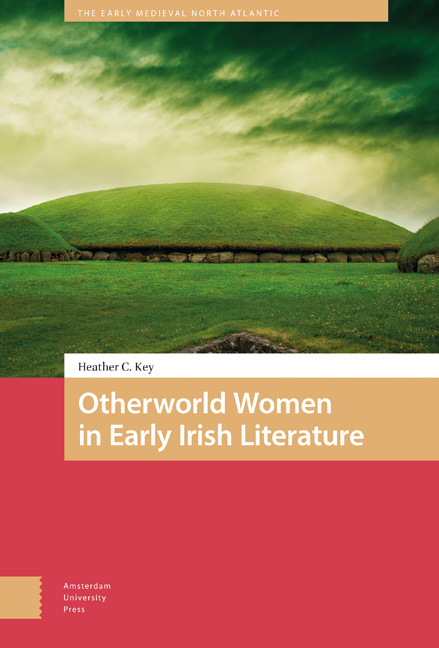2 - The ‘Otherworld’ of Early Ireland
Published online by Cambridge University Press: 24 November 2023
Summary
Patrick Sims-Williams points out that the term ‘the Otherworld’ is a modern academic term that has no equivalent in medieval Celtic literatures (Sims-Williams 60). What, then, do we mean when we discuss the Otherworld in these literatures? What attributes characterize a place or places as being an/the Otherworld? In short, do we understand the supernatural realm(s) in the same way that the authors of medieval Celtic literatures perceived it (or them)?
Immanence and Sacred Space
One of the most striking attributes of the supernatural dwellings or realms in Irish legend, which are conventionally designated the ‘Otherworld,’ is that they – or at least the entrances to them – were generally localized within the geography of the mortal world; a part of it, rather than apart from it. As John Carey says, “the Otherworld's separation from our world … coexists with its immediacy: it is hidden within, or identified with, the landmarks of each locale” (Carey, “Time, Space” 2). When it was accessible to mortals, it was generally through certain ‘hollow hills’ or bodies of water – lakes, wells, or rivers – and occasionally through a mysterious mist. Newgrange was such a place, as was the Hill of Allen (Koch & Carey, Celtic Heroic Age 147; Nagy 262, n. 55). Immacaldam in Druad Brain 7 inna Banḟatho Febuil os Loch Ḟebuil (IDB) and the metrical and prose dindshenchas both mention Otherworldly wells (Carey, “Lough” 76–77; Gwynn, Metrical Dindshenchas vol. 3 26–33), and Dorn (or the wife of Badurn) obtains a vessel from sid women in a spring (Carey, Ireland 88–89), while both Baile in Scail (BiS) and Echtrae Cormaic (ECm) mention reaching Otherworldly realms through thick mists (Murray, Baile 33 & 50; Hull, Echtra 876–879).
There are references to what are called side throughout the legends and sagas of early Irish literature. The early Irish believed these mounds to be entrances to the Otherworld, as I shall show below. There appears to be no over-arching pantheon of gods in Celtic myth; gods were mostly regional, and connected with specific features of the landscape (Maier 135).
- Type
- Chapter
- Information
- Otherworld Women in Early Irish Literature , pp. 35 - 52Publisher: Amsterdam University PressPrint publication year: 2023



